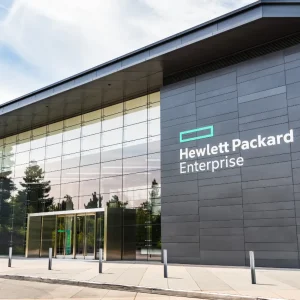
Google Cloud and French tech stalwart Thales have launched a joint venture which will see the latter create a new sovereign cloud for France. The partnership is the latest in a series of arrangements across the continent which have seen European tech companies team up with the US cloud hyperscalers, and it is hoped such arrangements could go some way to meeting Europe’s desire for “cloud sovereignty”.
Under the agreement, Thales will use Google Cloud’s technology to build the cloud platform, but none of its physical infrastructure. The joint venture will be run by Thales, and will offer cloud services to clients in the public and private sectors. This set-up, the companies say, meets the French government’s “trusted cloud” rules, a set of regulations for cloud computing companies launched last year to promote high standards of data protection.

“Our unique approach to addressing the concerns of French citizens and government bodies ensures organisations can benefit from the innovation and agility of the cloud, without compromising on the security, privacy and sovereignty required by the French government,” said Google Cloud CEO Thomas Kurian.
Google has a similar tie-up in Germany, where Google Cloud services run on servers of Deutsche Telekom subsidiary T-Systems. Meanwhile, in Italy, the tendering process is currently underway to create a €900m national cloud hub, with a consortium led by Telecom Italia thought to be the front runner. Italian government officials have said this hub could feature services from US cloud providers such as Google Cloud or its rivals, Amazon’s AWS and Microsoft Azure, providing the technology is licensed to an Italian business.
While these joint projects appear to offer companies more control over where data is stored and processed, whether they offer true European cloud sovereignty is another matter.
Why is Europe pushing for cloud sovereignty?
The cloud is one of several technology areas, including semiconductors and supercomputing, where the EU is keen to build its indigenous capabilities. Currently, the public cloud landscape is dominated by US providers, all of which are growing their share of the European market, and the European Union wants to develop a native cloud ecosystem and reduce this reliance on overseas companies. Last year, 25 member states signed a declaration pledging to build the next generation of cloud technology in Europe, and various initiatives are already underway.
Valentijn de Leeuw, vice president a tech research company ARC Advisory Group, says this focus on a sovereign cloud ecosystem has several key drivers. “Europe wants a level playing field that avoids people getting locked-in to a particular cloud provider and giving similar chances to small and large provider companies competing,” he says. “The EU is concerned that if you have a deal with one large US company you are limited in terms of what you can do in future. That means you need interoperability, which is not guaranteed at the moment – if I have configured an application in Azure it is at best partially portable to AWS.”
De Leeuw says the EU’s strategy is also a bid to close the technology gap on the US and Asia, as well ensuring that data generated in Europe is stored and processed securely on the continent. “There’s a recognition that [the EU] is behind the US and Asia on cloud, so this is a good chance to stimulate the economy,” he says. “There’s also the discussion around who owns and controls data – it’s probably easier to protect data and data traffic if it’s based in Europe, though I think more work needs to be done around encryption, processes and behaviour to make it completely safe.”
Analyst Mike Small, who covers the cloud market for Kuppinger Cole, says the legislative culture in Germany and France – the EU’s biggest markets – is also a key reason behind the push in Europe for digital sovereignty in the cloud.
The notion of digital sovereignty in the EU is being driven by the France/Germany axis, where the attitude on this issue is very different to somewhere like the UK.
Mike Small, Kuppinger Cole
“If you look at certain geographies, in particular Germany and other German-speaking countries such as Austria and Switzerland, there is a very strong history of legislation around who can collect data and what they can do with it, and a lot of companies don’t want their data in the hands of an American company,” Small says. “So the notion of digital sovereignty in the EU is being driven by the France/Germany axis, where the attitude on this issue is very different to somewhere like the UK, which almost seems to take a ‘don’t care’ approach and is quite comfortable with the role of the US cloud providers.”
Do joint ventures deliver cloud sovereignty for Europe?
Though locally hosted joint ventures such as the Thales-Google Cloud in France tie-up do not completely remove the influence of US cloud providers from the European ecosystem, Lukas Klingholz, head of cloud and AI at Bitkom, a German digital trade association, says they can provide a practical solution that offers a greater degree of sovereignty. “It depends on the use case,” he says. “There are use cases, particularly in the public sector, where public sector decision makers tend to only use a European provider, but for others users the need to deploy in the cloud is urgent and at the moment the European providers don’t have the scalability to fulfill their needs in the same way that the hyperscalers can.”
Klingholz cites the example of the German healthcare system. “Cloud uptake in healthcare in Germany is very, very, low,” he says. “There’s a big legacy IT stack, and the use of cloud technology is very raw. This kind of partnership could be a door-opener for those sectors to get into the cloud for the first time, as opposed to other sectors, such as financial services or manufacturing, where there is already a far high degree of cloud maturity.”
Kuppinger Cole’s Small argues the partnerships are a partial solution to the issue of European cloud sovereignty, and says they can help businesses ensure they reduce the likelihood of falling foul of breaches of data legislation such as GDPR. “It’s about practical risk management,” he says. “How you ameliorate the risk to your data in the cloud, and this is one way to manage that risk.”
What is the future for the US hyperscalers in Europe?
For the hyperscalers, Small says forming partnerships with European companies helps ensure they retain a foothold in the market in the face of the EU’s push for cloud sovereignty in Europe. “The US companies are concerned about the way the European market is going, and investing a lot of money in lobbying across the EU,” he says. “They don’t want to be locked out of this market, so in a sense [the partnerships] are good because they make them try and move in Europe’s direction, though of course, they are lobbying like mad to retain the status quo.”
As reported by Tech Monitor, Europe is looking to establish common standards for cloud provision in Europe through GAIA-X, a set of rules and open architecture for the cloud. De Leeuw says more legislation is likely to emerge around how businesses can use the cloud, and that the US hyperscalers may have to adopt a more open way of working to enable greater inoperability between platforms.
He cites the example of OpenStack, an open-source cloud operating system which is used by OVHCloud, Europe’s leading cloud provider. “AWS and Azure don’t use OpenStack, but they’re free to use it,” he says. “If they wanted to create an OpenStack cloud in parallel to what they have today, I think Europe would welcome that. I don’t think the EU wants to keep them out, it just wants the hyperscalers to play the game by the rules that Europe sets.”
Klingholz says projects such as GAIA-X are just the start of what will be a sustained effort to build European cloud capabilities. “We see that over the next decade policy makers in Europe are going to get really serious about digital sovereignty,” he says. “We’re going to see a lot of workstreams to strengthen the European cloud ecosystem and the cloud ecosystem in Europe as well as next-generation technologies for manufacturing and edge cloud which will help what the European providers can offer.”






